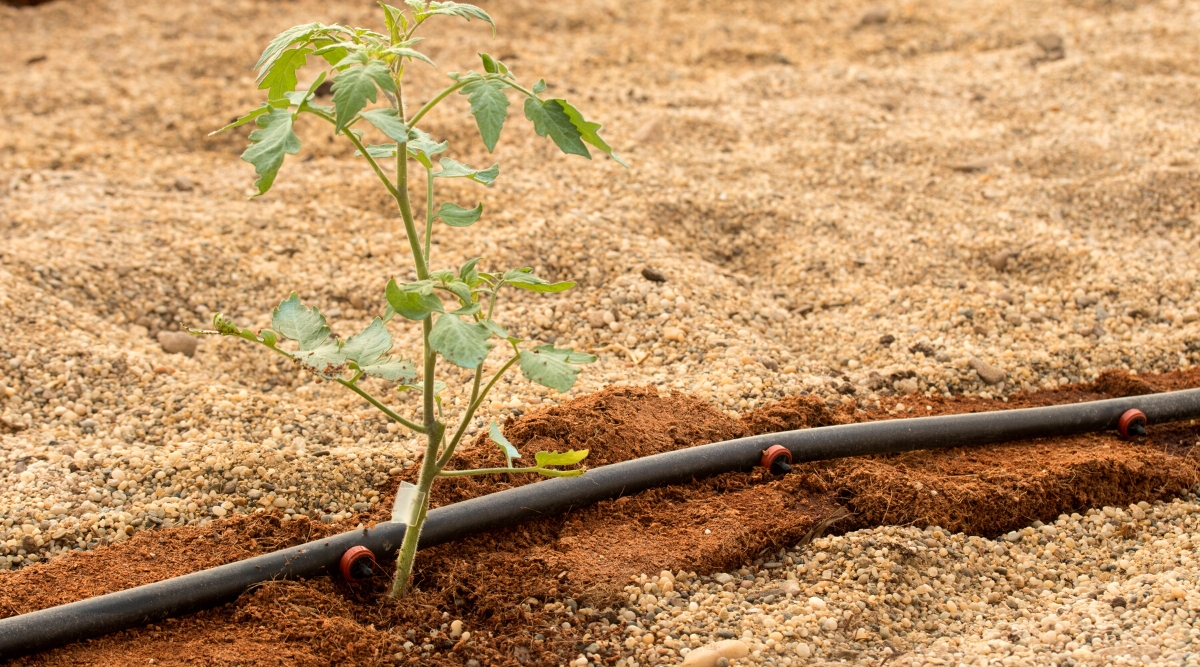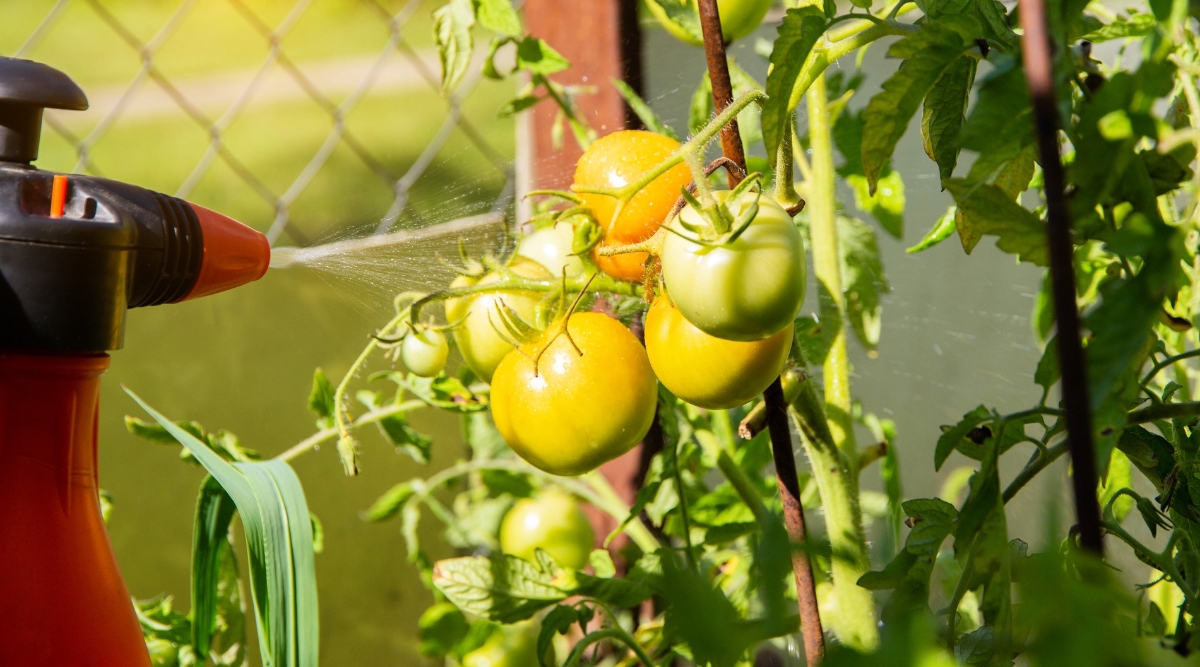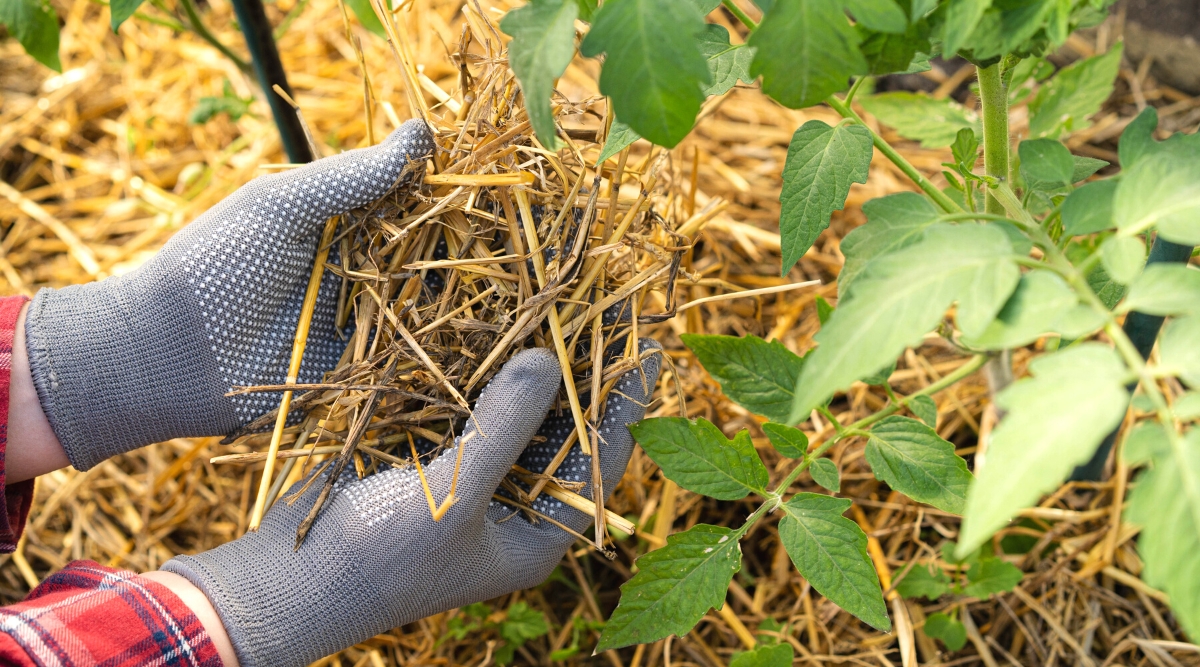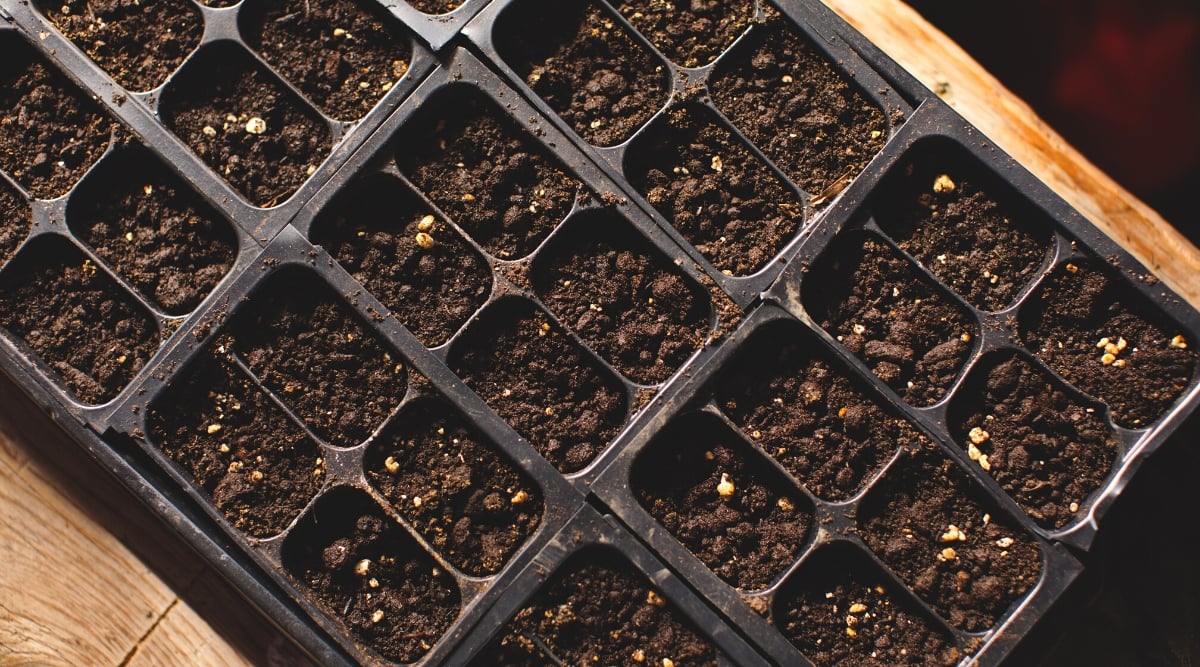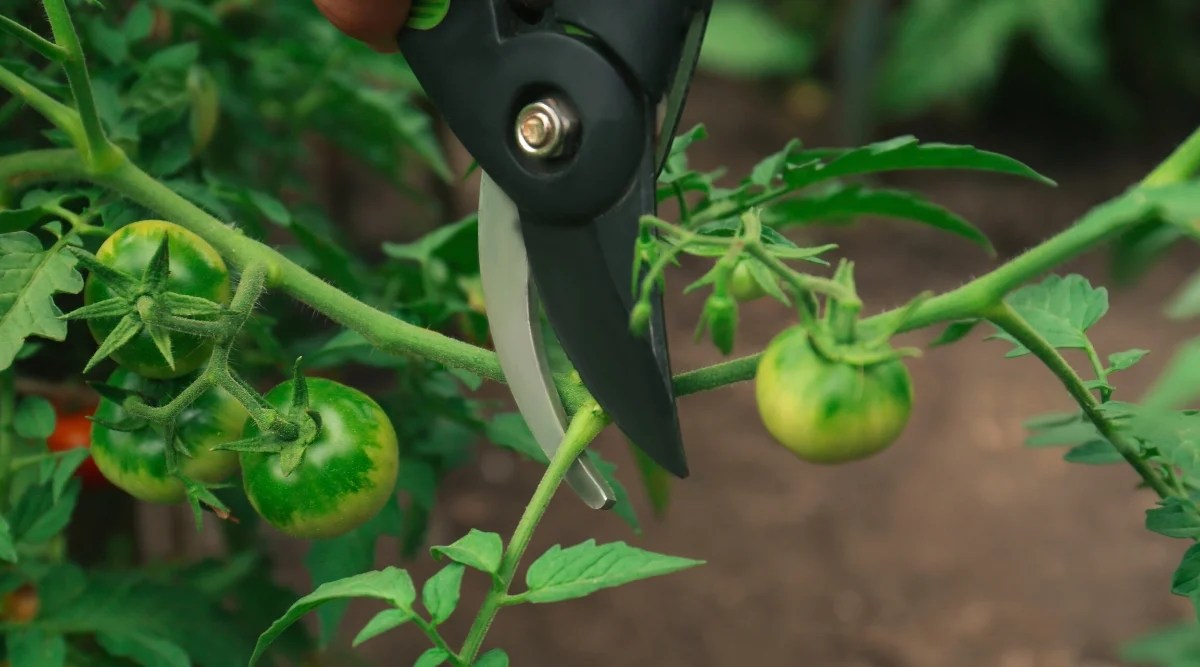Plant Diseases
You might be wondering what those spot are on your tomato plant leaf . Join horticulture expert Jenna Rich as she goes over how to spot Septoria Leaf Spot on love apple and what you may do to forestall it .
depicted object

Hooray , it ’s in conclusion tomato plant time of year ! Unfortunately , tomato pathogens are also in season and quick to attack weak plants . Septoria leaf spot is one of the most common love apple diseases . Here is how to identify , treat , and void it in the future .
What is Septoria Leaf Spot?
Septoria leaf spot , also ring Septoria blight , is a fungal disease that pass worldwide , most often in tomato plots . It has been known to take out 100 % of feign area during a nasty eruption . Dangerously , it can affect tomato at any growth stage .
What Causes Septoria Leaf Spot?
The fungusSeptoria lycopersiciis the perpetrator and spreader of this disease . It can be extremely detrimental to gardens and farms or any other localization where tomatoes are grown . The fungus begins by attacking older leaves , so growers usually notice spots on the low parts of the industrial plant first .
Conditions and Crops
Septoria lycopersicithrives in extended wet , warm , and humid periods . The leaf spots often show up after grueling rain when there is still high humidity .
This is look at a love apple disease but has been know to show up in other Solanaceous plants such as eggplant , potatoes , and petunias .
Identifying Septoria Leaf Spot in Tomatoes
There are many types of leaf spot disease , includingCercospora leaf spotandAlternaria leaf spot . Here ’s how to mark Septoria from the others so you may properly deal with it .
Symptoms
The first planetary house of this disease issmall , dead round spots on the undersideof tomato leaves . These office will have dark brown margins and may be topaz or grey in colouration , sometimes with small , ignominious fruiting body on the bottom of the leaf just below the billet .
As the disease progresses , the spots may become larger and appear to meld , but you’re able to broadly still see some dark brown margin in the spots . Symptoms typically only appear on the leaves of tomatoes , but spots can also occur on stems and leafstalk .
If your plants have a particularly spoilt caseful of this fungal disease and spots are numerous , the leaves will probably wrick icteric and come off , affecting the oldest leafage first .
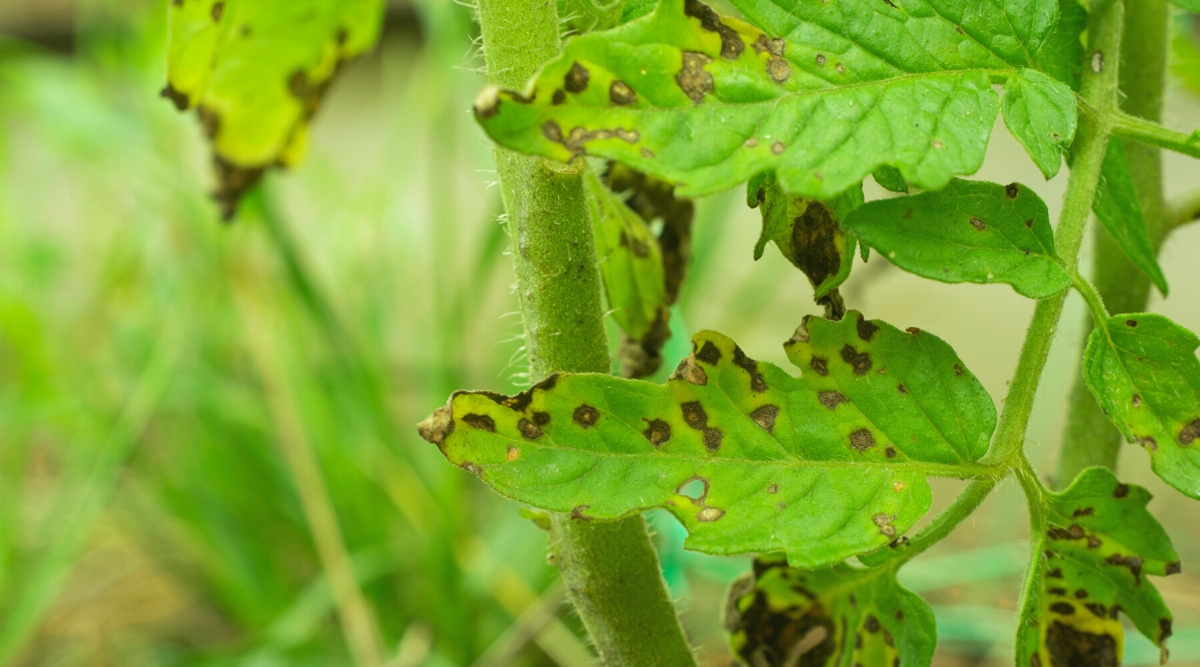
It can quickly move up the plant life , especially if conditions are correct . Due to the going in leaf coverage , this can lead tosunscaldof unprotected fruit .
Fruit is seldom affected directly by the disease .
Septoria Leaf Spot vs. Early Blight
These two diseases can sometimes be confuse due to the bearing of spots and yellow leave-taking . However , they have differences you should look for to make a right diagnosis .
Early blighthasirregularly forge circles , typically brown in color . Larger blight spots can sometimes have concentrical rings inside great spots with yellowing of the leaf tissue paper around the situation . In demarcation , Septoria Leaf Spot feature lilliputian , very round spot with a light centerthat sometimes immix together as the disease progresses .
The other tell - tale sign of Septoria is the presence oftiny protrusion inside the tan or grey centersof the slur , often on the bottom of parting . These are called pycnidia and are the fruiting bodies of the fungus .
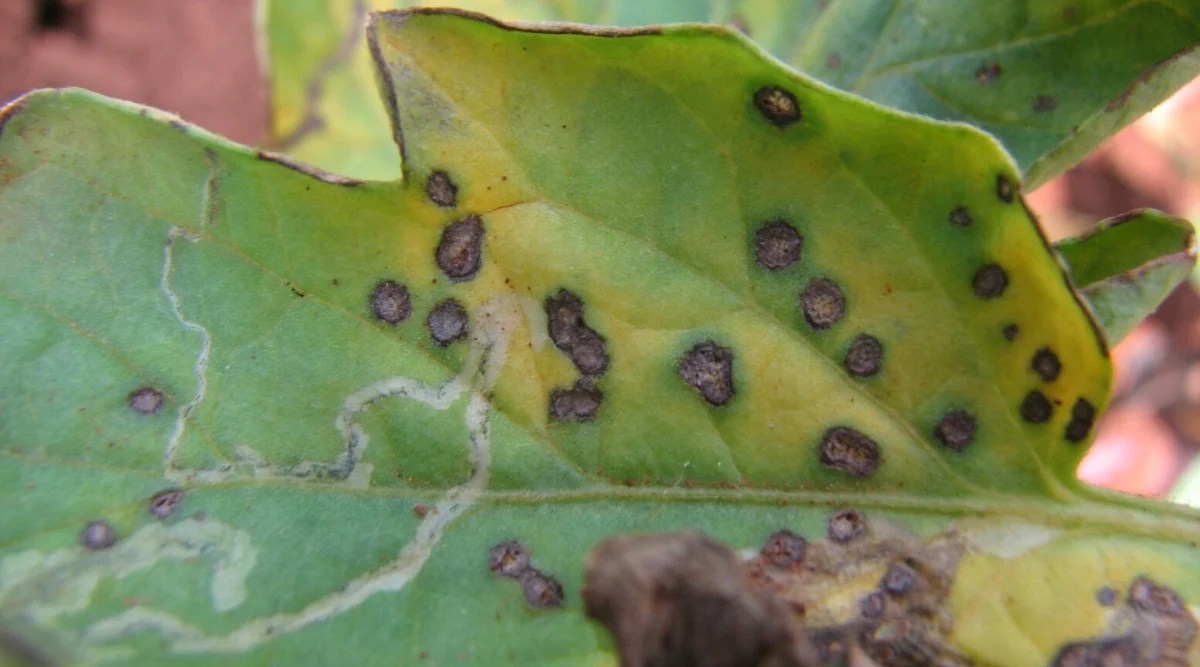
How to Dispose of Infected Plants
If you observe symptom of this disease and have positively place it , directly set out to remove infect leavesand polish off all debris from your garden .
apply fresh tools and glove , disinfect your tools between tasks , and change your apparel before moving to an uninfected area of your garden . taste doing this task when the leave-taking are dry as the fungal spore can easily distribute via water .
Pro confidential information : you could remove up to ⅓ of a plant ’s parting without damage its increment . Just keep in brain you may open up some of your yield to sunscald if you remove a leaf canopy above a ripen bunch .

If the transmission is austere , remove the intact plant life and move it to your burn pile . Do not compost septic material as the spores can hold up on in the compost .
How to Prevent
Tomato diseases incline to spread quickly , so prevention is key . Here ’s how to keep this foul pathogen out of your garden .
Remove Plant Debris in the Fall
Septoria lycopersiciwill overwinter on any tomato debris , so all parts must be to the full removed from your gardening area . This is a big fall task when you are cleaning up your bed at the last of the time of year . Plant and folio debris go out behind to winter in the ground is themain root of the inoculumof this fungal disease .
This include trimming , suckers , leaves , fallen fruit , and any other plant parts , so be sure to take all uninfected material to the compost pile at the end of the season to forestall its development or bed covering . If you know the disease is present , remove the infect material from your property completely or cauterise it .
Practice Crop Rotation
Crop rotation is a unspoiled way to prevent the same diseases and pests from attacking your garden game class after twelvemonth . If potential , rotate tomato bed with non - Solanaceous harvest .
This mean you should stave off set related to nightshade crop ( eggplants , white pepper , petunias , etc . ) in the same bed several seasons in a rowing . If potential , look at least two class before establish tomatoes there again .
Invert the Soil
If crop revolution is not possible or your plot is very small , a very deep eversion of the soil may help reduce the luck of an infection . Use a broadfork to dig into the bed and switch the soil upward .
This proficiency can eat up any fungal spores that are on the soil ’s surface , preclude them from being splashed up onto love apple . It also loosens up compacted soil , aerate it and make it easy for root word to permeate .
Grow Grafted Tomatoes
Some grower claim their grafted tomatoes were slower to succumb to disease , but this delays the inevitable . graft is when an heirloom or a coveted variety of Lycopersicon esculentum is wed onto the rootstalk of a insubordinate tomato . While the rootstock does convey some resistance to common garden disease , that does n’t mean it ’s fully resistant to them ; a spoiled transmission can still come about .
If you are intimate with graft or can corrupt engraft plants from a trust source ( like a local constitutional sodbuster ) , I recommend have it a shot . This is double true if you grow in soil that may have fungal sporespresent . Grafting onto a resistant rootstalk might get you a few more week of harvest time .
The downside to this program is that no rhizome cultivars are jazz to be insubordinate to Septoria fungi . This does not mean you should n’t look for resistant cultivar , as new tomato miscellany add up out every class , but you may only be able to find varieties resistant to other disease .

Avoid Overhead Watering
Wet foliage and droplets on leave-taking can attend to in the banquet of many harmful spores . The moist surface collar and anchors any wind - borne spores , appropriate them to take clutches on a leafage ’s control surface . It ’s best to water at the foundation of your works to avoid any H2O spattering on the foliation .
Water early in the day so plants can drink up and any lounge droplets have a chance to dry out quickly once the sun comes out .
Create a Pest Management Plan
pestilence unknowingly spread diseases of all kinds , including this one . As they hop or vanish around your garden , spores that have caught on hairs on their soundbox are send from crop to crop . Keep pests at bay to facilitate debar this method of spread disease .
Mulch Your Plants
This disease often spreads by H2O splash and travels with plant debris or dirt . Mulching your footpath and plant beds can assist minimize any water system splashing soil ( and hidden spore ) up onto the leave , which can conquer the ranch of disease . Be certain the mulch is well - compost . you may also try using landscape painting fabric or black compostable plastic mulch .
Remember , nightshade and horsenettle sess can become septic with this pathogen , so covering paths and surround areas should help keep weed pressure down .
Keep a Tidy Garden
If you are bulge out seeds each year or produce crops in a greenhouse , clean all of your source - start supplies or glasshouse spaces each season to see there are no lingering spore present . This includes cadre trays , 1020 tray , work bench , reclaimable tags , etc . A diluted blanching agent spray is the best way to hygienise .
Septoria lycopersicican also locomote on habiliment , shoes , or other gardening supply , so take care when walking through tomato fields or high burrow growing domain .
Prune for Airflow
The more space your works have to diffuse out and pass off , the sound . Good airflow also helps your plants dry out out day by day . analyze your industrial plant every week or two with a clean pair of snippet in hand , and prune unnecessary or damaged leaf from the bottom .
This is a great habit to avoid spreading disease , as spores can jump from plant to plant if leaves are touching . If you do discover disease symptom , sanitize your creature between plants .
How to Treat
bar is really key , peculiarly with this disease . If your garden is prone to this disease or you suspect it might round , treat it immediately before symptom are rearing . You have a few selection :
Fungicides
Fungicides contain sulfur or pig are well used very early in the disease Hz . insure the recording label specifies that the software is appropriate for vegetable ; as always , read the full label before use . You may need to stay harvesting after software to ascertain the fungicide has part down enough and fruit can safely be take in . Many grower are give these antifungal agent in ahead of time to mid - July when shape incline to be best .
Foliar Treatments
Foliar treatment with theactive constituent atomic number 19 bicarbonatehave been shown to treat and prevent succeeding contagion of many fungous diseases , include some leaf berth , downy mildew , powdery mold , anthracnose , and rust fungus . manufacturer of these handling lay claim they give two weeks of shelter and can be used in alignment with other treatments and that it destabilize fungi at a cellphone point while alter the pH to prevent succeeding prison-breaking .
Read Labels and Use Caution
Chemical handling , let in chlorothalonil and mancozeb , are safe for householder use .
Frequently Asked Questions
Yes , Septoria lycopersici , the fungus that causes Septoria folio spot , can and does outlast in soil over wintertime month . If there is septic plant debris present in the soil , there is also pycnidium , those fruiting body .
The pycnidium set about to produce spores when conditions are just right , which can then be spread to healthy plant by direction of jazz , water dab , hand and clothes of workers , equipment , during cultivation , and even by pest . The spores then begin to germinate on tidy plants , infect the tissue . Symptoms will likely show up in about 5 day . This oscillation will continue as spores overspread and raw infections begin .
Unfortunately at this time , there are no known Septoria leaf dapple - resistant love apple cultivar . However , there are some cultivars that are resistant to other tomato disease , and these can be good .

Contacting your local conjunctive extension office is a with child start point . Most prolongation offices have a diagnostic science laboratory that will try sample for a little fee . Just check off their site and follow the mail - in book of instructions . Many res publica wing office also offer fungicide app and pesticide safety preparation course and some states even offer certifications .
you could also find a local gardening lodge , find a master gardener club , or join a Facebook horticulture group and inquire fellow member for advice . nurseryman love to share tips and advice !
Final Thoughts
The positive recognition of common garden disease is key to bar and proper intervention . Knowledge is power ! Have a architectural plan of action in mind if the need bob up , be confident in your actions , and know that your tomato plants are in ripe hand .


